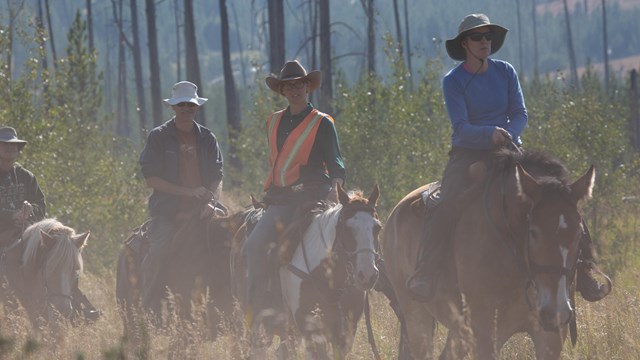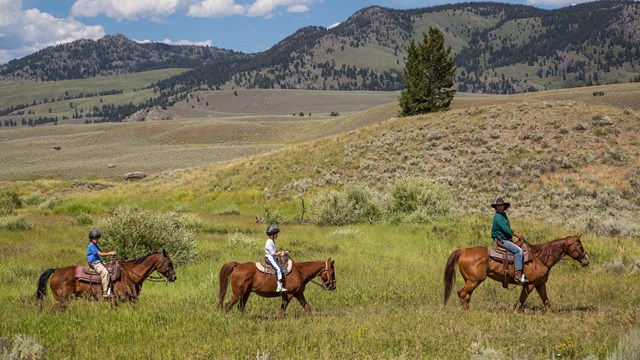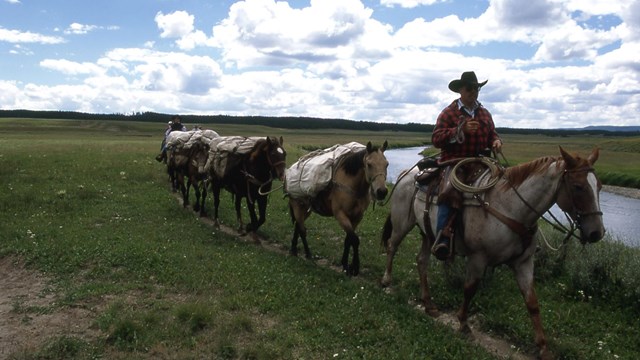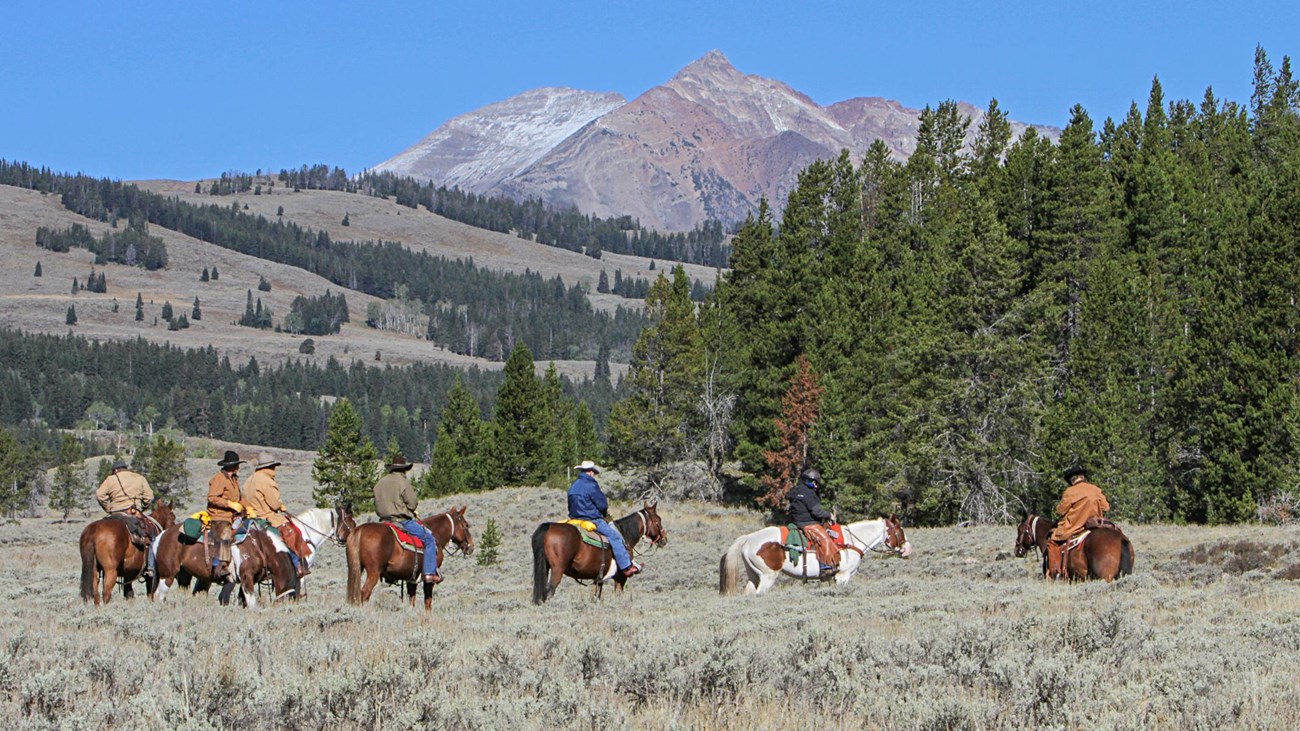|
Noxious weeds are spreading at an alarming rate in Yellowstone National Park, where approximately 200 nonnative plant species have been identified. Those that present the most serious threat to the park include aggressive invaders such as spotted knapweed, oxeye daisy, yellow and dalmatian toadflax, St. Johnswort, and leafy spurge. Invading, nonnative plants spread quickly, often displacing native species and disrupting local plant and animal communities. Many of these plants are not edible to native wildlife such as elk, bison, bighorn sheep, mule deer, and pronghorn antelope, and they can suffer a loss of feed. In some areas, rare plants could be lost. DistributionNonnative plants are spread by contaminated hay, dirty vehicles, and construction equipment. They can easily become established in disturbed habitats such as roadsides and trails. Predictably, most nonnative plant infestations in the park begin along roadsides and in developed areas. Prevention & ControlThe National Park Service uses an integrated management approach to control nonnative vegetation and prevent introduction of new species. This program combines education with applied control methods such as hand-pulling, mowing, and the application of approved herbicides. These efforts are part of a cooperative, multi-agency strategy to control weeds Help Protect Your ParkTake the time to wash your vehicle, trailer, and equipment before leaving home. Remove all loose hay, straw, and other plant products from beds of pickup trucks and interiors of open stock trailers prior to transport. Remove weed seeds from stock by brushing them thoroughly and cleaning their hooves prior to transport. Use only certified weed-free hay. Securely wrap all hay, straw, and plant products transported through the park. Please report any weed infestations you notice to park personnel. It’s the LawIntroducing wildlife, fish, or plants, including reproductive bodies, into the park area/ ecosystem is prohibited under regulations found at 36 CFR Sec. 1.5 (a)(2) 
Day Ride Permits
Prior to riding in Yellowstone, you must obtain a free Day Ride Permit. 
Coggins Test
All stock (horses, burros or mules) within Yellowstone must have a negative EIA or Coggins test within the last 12 months. 
Stock Regulations
Learn how to plan a safe, enjoyable, and low-impact trip. 
Ride a Horse
Bring your own stock or take a guided ride. |
Last updated: June 19, 2019
